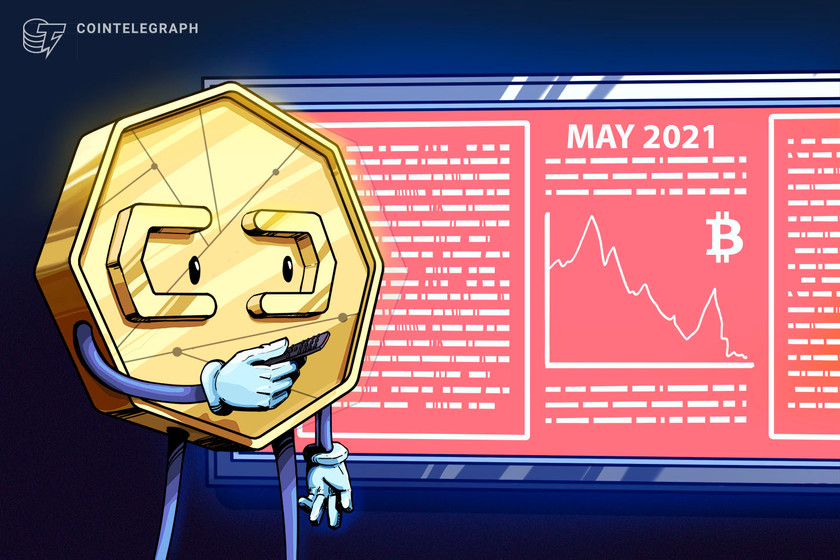Trading crypto assets, or any market for that matter, is a zero-sum game. When one person wins, someone else must lose, making trading highly competitive. That being said, consistently profitable strategies can be hard to find. Recently, PlanB, a crypto investor and analyst active on Twitter, described a Bitcoin (BTC) trading strategy that yields a stated 7-10% profit annually with limited downside risk.
PlanB tweeted,
“Bitcoin cash and carry (spot buying BTC and simultaneously future selling for delivery in 1-6 months) will net you 7-10% annualized return .. almost risk free.”
PlanB’s strategy can be viewed as a form of arbitrage trading. Essentially, arbitrage is trading based on price discrepancies across multiple exchanges. If Bitcoin trades at $9,000 on one exchange and $10,000 on another, a trader can buy BTC on the cheaper exchange, transfer it to the more expensive exchange, and sell it there for a $1,000 profit per BTC.
Over the past several years, the crypto market has seen numerous exchanges added to its landscape, giving traders more options than Bitcoin’s early days. At times, these exchanges may show price differences for various assets, similar to the example above, although such discrepancies may not last long as programmers have developed bots to act on those opportunities faster and more efficiently than human point and click methods.
Other complications also exist concerning arbitrage, such as withdrawal limits and available fiat or stablecoins. PlanB’s method appears to take advantage of an opportunity that is still available in the crypto markets currently.
Bitcoin spot and futures trading
PlanB’s mentioned trading strategy involves both spot Bitcoin trading and Bitcoin futures trading.
Spot Bitcoin trading involves buying and selling physical Bitcoin, which is transferable to other exchanges or various wallets. Traders might look to an exchange such as Coinbase to buy spot BTC.
Alternatively, Bitcoin futures trading is a derivative trading product based on Bitcoin’s price. Traders speculate on the future price of Bitcoin, buying and selling contracts that eventually expire (unless the product is a perpetual swap futures product) into cash or physical (spot) BTC.
Perpetual swap futures, as seen on exchanges such as BitMEX, do not come with expiration but instead often conduct recurring funding periods every several hours which keeps those products’ prices close to BTC spot prices on other exchanges.
Many of these platforms, however, also have Bitcoin futures trading products that are based on expiration periods, such as monthly or quarterly expiration. Monthly Bitcoin futures, for example, expire at the end of a one-month period.
If a trader enters a 1 BTC long position while Bitcoin trades at $5,000, and holds that position through expiration, that trader receives a settlement of 1 BTC after expiration, regardless of Bitcoin’s price at the time of expiration. Some exchanges, such as the Chicago Mercantile Exchange (CME) settle these positions into the cash equivalent of the position.
Explanation of PlanB’s strategy
Bitcoin’s futures and spot trading step a delicate dance as Bitcoin futures prices can sometimes trade at a premium to spot BTC, depending on expiration. At press time on Nov. 5, Coinbase shows Bitcoin trading around $9,360, while CME’s November Bitcoin futures product trades at $9,420. This price gap will likely close as time marches toward CME’s November futures expiration.
PlanB’s strategy exploits this type of spot and futures price gap concept. CME’s cash-settled Bitcoin futures and Bakkt’s physically-settled Bitcoin futures often trade at higher levels compared to BTC’s spot trading, the analyst explained in a podcast interview with Stephen Livera. “That opens the door to a classical carry trade construction,” PlanB said.
PlanB’s trading method essentially involves buying spot BTC on one exchange, while shorting an equal amount of BTC futures contracts on another exchange.
He noted,
“You buy it, and you immediately sell it against this higher future price so you lock in a certain profit — a guaranteed profit. So, in a way, that’s a risk-free profit. There are some risks, but they are small.”
The same tactics are possible concerning spot gold and gold futures, although the return is around 1%, which is a fraction of the possible 12% achievable using Bitcoin, PlanB explained on the podcast.
Explaining this concept and its application to Bitcoin has sparked the interest of several traditional market participants, PlanB said.
“That’s the example I use nowadays for people with a traditional investing mindset that really gets them thinking into Bitcoin. Actually, I know three guys who personally bought Bitcoin after this example who are professional money managers.”
As Bitcoin is a newer asset class, and futures products around the coin have only been available via mainstream finance for about two years, it is unclear how long such an edge might last before it becomes less profitable. This trading edge also might be partly based on Bitcoin’s volatile nature, which could hold consistent for years to come or flatline tomorrow.
It is clear, however, that this profit opportunity is bringing added participants to the Bitcoin space, according to PlanB’s comments, which is a good thing as far as mainstream adoption and usage are concerned.







